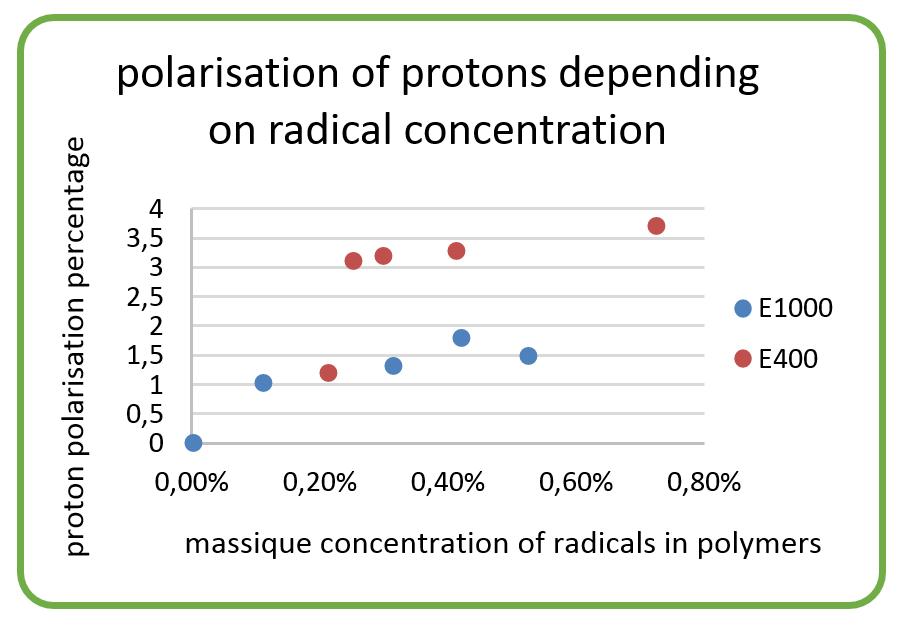|
Introduction
Dynamic Nuclear Polarisation or DNP is a quite recent technique which allows us to increase the Nuclear Magnetic Resonance (NMR) signal by a factor of 10000 and more. This kind of analysis needs a radical to be polarized first, then this polarization can be transferred to hydrogen and carbon 13 by applying micro-waves. The aim of this study was to show the impact of radical concentration on enhancement.
Experimental conditions
Two ranges with two different kinds of polymers morphology were created with a radical graft inside. The concentration of the radical in those materials were gradually increased on the same range of values.
Those materials were putted in a cryogenic probe. Then, the probe was cooled down in a 3 tesla magnet at 4 Kelvin. To find out the polarization capacity of polymers, we made two acquisitions by polarizing protons of matrices.
First of all, the system needed to reach a thermic balance. This first acquisition, needs to be performed to reach a stationary state of the proton signal. When the balance was reached, micro waves were used to transfer radical polarization to polymer hydrogen spins. We compared integrations of proton signals before and after the DNP transfer. This comparison allowed us to calculate the polarization rate.
Results
We obtained a percentage of hydrogen extra polarization for each. As we can read on the graph, the improvement of the radical concentration in both polymers is linked positively with the final polarization percentage. So we could say that the more we add radicals the more we will have polarization.
However, we can see that the more efficient E1000 polymer is not the more concentrated. In fact, if radicals allowed the hyper polarization of the polymer matrix, those chemical have a “masking” range, which will make the NMR signal invisible. By adding too many radicals in polymers the final polarization of the material will be reduce.
That is why, there is an optimal concentration of radical in the polymer to improve the signal in NMR.
Conclusion
This study showed that there is an optimal concentration for each materials used in solid DNP. However, DNP polarization will be different depends of your solid morphology, radicals scatter in the polymer and even some kind of molecular function in your polymer can impact polarization results.
That is why, in this case, polymers E400 will be preferred with an average concentration of radical of 1%.
|
|

title : polarisation of protons depending on radical concentration
y axis : proton polarisation percentage
x axis : mass concentration of radicals in polymers
|
Institu des sciences Analytiques de Lyon - Chemistry, Catalysis, Polymers and Processes
5 Rue de la Doua - 43, boulevard du 11 Novembre 1918 BP 82077
69100 - 69616 Villeurbanne Cedex Villeurbanne
|
|

|



